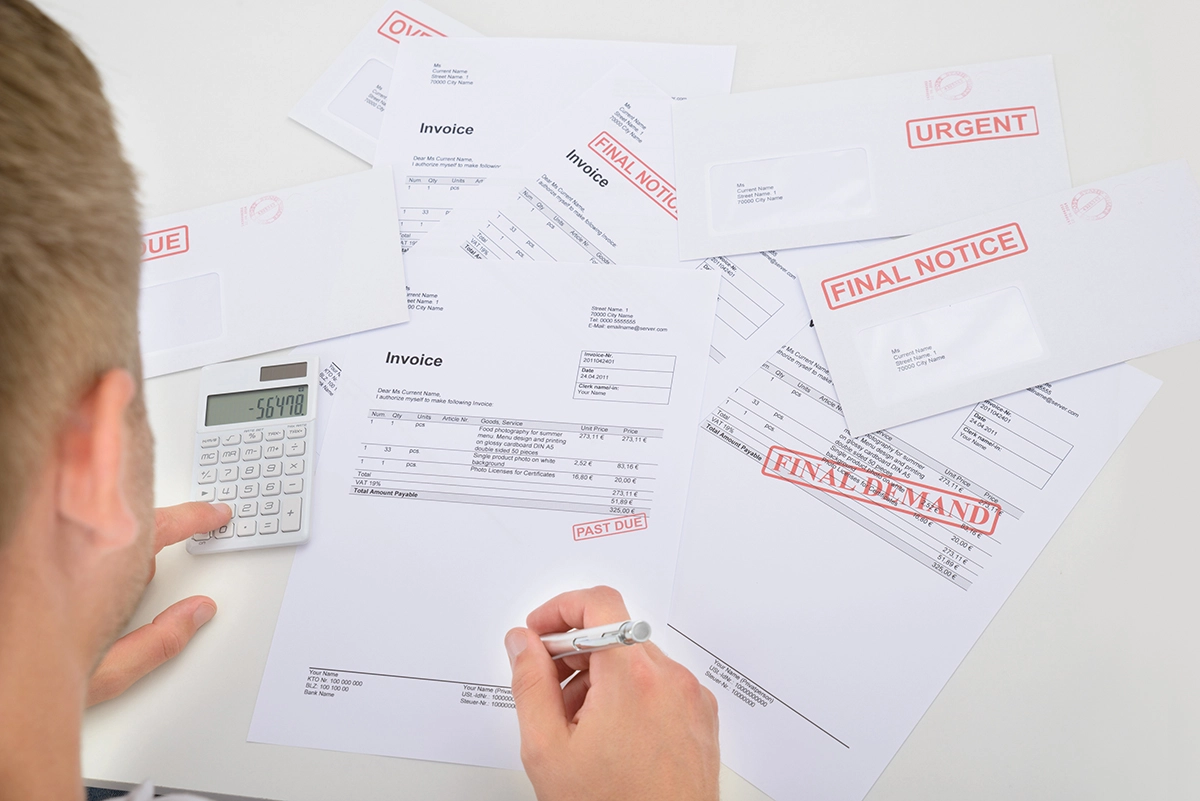Most of the time, the only negative numbers you should have on your balance sheet are allowances for doubtful accounts, accumulated depreciation, less current portion of long-term debt (in the long-term liabilities section), and treasury stock. If you have negative equity, this means that your company is losing money and probably has been for years. All other numbers should be positive.
Negative accounts receivable and negative loan payments are two areas where I commonly see negative numbers. What do the negative numbers mean and how do you correct them? The answers and examples are next.
What are Negative Accounts Receivable?
Negative accounts receivable means that your company owes your customers money. While you may owe a few customers a refund, or a few customers have overpaid their invoices by a few dollars, your company doesn’t owe your entire customer list a refund. On an aged accounts receivable report, you may see a few negative numbers for those customers to whom you owe refunds. The entire receivables list should not be negative.
Generally, negative accounts receivable happens because your company received deposits for work to be done. The bookkeeper erroneously enters the deposit in accounts receivable. Since there has not been an invoice generated, the accounts receivable is negative.
Deposits for work that has not been performed are liabilities and go in the current liabilities section of your balance sheet under a deposit account.
When you perform the work and invoice the customer for the work, the deposit is applied to revenue (debit the amount of the deposit and credit revenue). The total invoice for the work performed less the deposit is the accounts receivable amount.
This is the proper accounting for the deposit:
Assume you receive a $10,000 deposit on a $100,000 project.
The journal entry is:
Cash $10,000
Current liabilities – deposits $10,000
When the project is completed and billed to the customer:
Accounts receivable $90,000
Current liabilities – deposits $10,000
Revenue $100,000
This keeps accounts receivable an accurate, positive number on your balance sheet. Then you can watch an accurate trend of accounts receivable to accounts payable to ensure you have enough cash to pay the company’s payables. Generally, you want at least a 2:1 ratio: at least twice as many accounts receivable to accounts payable. If your company collects more than 50% of its revenues on a COD basis, then add accounts receivable plus cash to accounts payable.
What are Negative Loan Values?
Negative loan values mean that the bank or other creditor owes your company money for an asset purchase. Not likely.
This is what typically happens. A loan payment is made. The entire amount of the payment is debited against the loan amount. In fact, the payment is a combination of principal repayment and interest paid to the bank for the privilege of getting a loan.
At the end of the loan period, if the entire loan payment was applied to the principal, the loan for that asset will be a negative amount on your balance sheet.
This means that your company’s profit and loss statement is inaccurate too. The interest portion of the loan repayment goes into the overhead. If this expense isn’t recorded as an overhead expense, your company’s net profit is too high.
When you receive a loan, it’s important to set up the asset and the loan amount on your balance sheet. If it is a truck loan, set up the truck asset in “Long Term Assets” and the truck loan in “Long Term Liabilities”. Both should have the description of the truck, i.e., the 2023 Ford Truck. Then your bookkeeper knows which loan is being repaid when the payments are made.
This is the proper accounting for the truck purchase:
Assume the truck was $50,000 and a down payment of $10,000 was made:
2023 Ford Truck $50,000
Loan – 2023 Ford Truck $40,000
Cash $10,000
This is the proper accounting for loan repayments.
Assume that the payment is $500 a month. Of the $500, $100 is for interest and $400 is for repayment of the principal.
The journal entry looks like this:
Loan repayment $400
Interest $100
Cash $500
The loan repayment and cash are balance sheet items. The interest is an overhead item on your company’s profit and loss statements. In most accounting software systems, this recurring invoice can be set up with the loan payment and interest as the debit, and cash as the credit. Then, if input correctly, you will see the accurate balance owed to the creditor every month.
Ruth King has more than 25 years of experience in the HVACR industry and has worked with contractors, distributors and manufacturers to help grow their companies and become more profitable. Contact Ruth at ruthking@hvacchannel.tv or at 770-729-0258.






